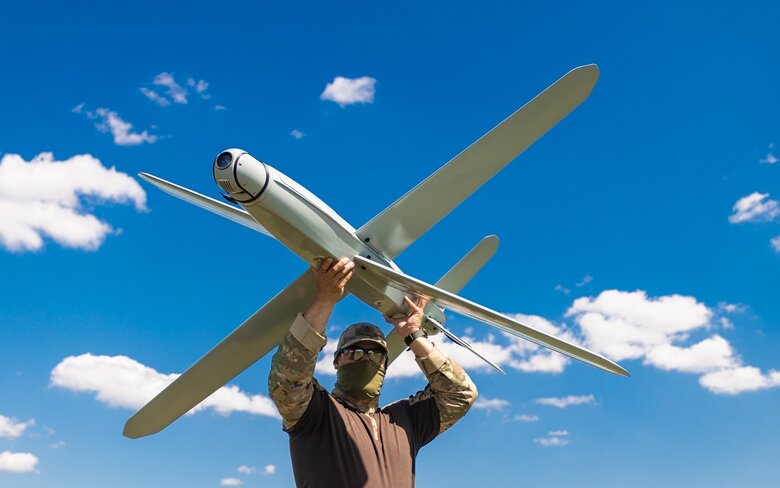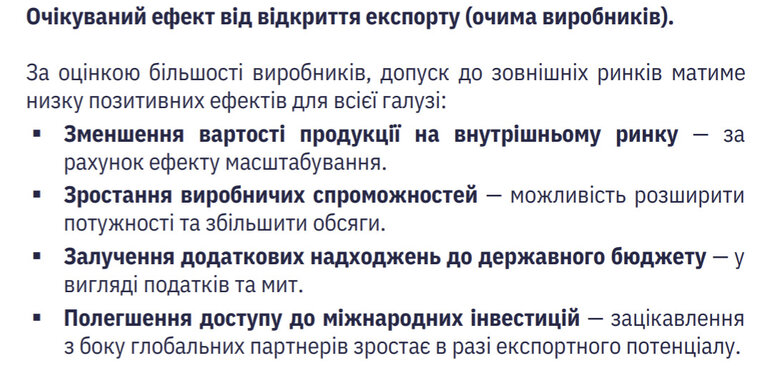Build with Ukraine: How will Zelenskyy’s announced program impact Ukraine’s defense industry?
Drone Industry
The Build with Ukraine program envisions the export of Ukrainian military technologies and the establishment of production lines abroad. Primarily, it focuses on manufacturing various types of drones, rockets, and artillery within partner countries that are already funding defense production or planning to do so. Leading the initiative are Denmark, Norway, Germany, the United Kingdom, and Lithuania.

President of Ukraine Volodymyr Zelenskyy first announced this programme in June. According to him, the first agreements under the programme should be signed this summer.
Additionally, the plan introduces incentives for enterprises in Ukraine’s defense-industrial complex. The initiative has been branded Defense City. On 16 July, lawmakers passed the relevant bills at first reading.
Business Censor explored how the implementation of the Build with Ukraine program is progressing and what domestic arms manufacturers think of the initiative.
Financing production and strengthening diplomatic positions
"Many Ukrainian arms makers greeted this year with a "chill down their spines". There was no clear understanding of state orders for the next 12 months, and fresh geopolitical turbulence was jeopardizing the country’s overall defense capability," DEVIRO, which has been developing, designing and manufacturing unmanned aerial vehicles and related software since 2014, told Business Censor.
Indeed, the potential of Ukraine’s defense-industrial complex is immense. However, Ukraine lacks sufficient funds to contract all production. This, in turn, slows the sector’s development, as since the full-scale Russian invasion, Ukrainian arms manufacturers have been unable to export weapons abroad.
This year, the state budget allocated a record amount for weapons production and procurement—UAH 739 billion (approximately $17.6 billion). At the same time, according to Volodymyr Zelenskyy, $43 billion has been secured this year to finance Ukraine’s defense industry. However, he did not clarify whether this figure includes Ukrainian budget funds or only assistance from partner countries. It is likewise unclear whether these funds have actually been allocated or partly represent commitments, and whether the full amount will be received in 2025 or constitutes long-term financing.
Previously, the Ministry of Strategic Industries, which was merged into the Ministry of Defense following a government reform, estimated the annual potential of the domestic defense-industrial complex at $35 billion.
"Build with Ukraine is the natural outcome of the state’s search for answers to the questions that have concerned Ukrainian arms manufacturers over the past three years. These are complex issues around enterprise security, technology export, and most importantly, orders and production financing. These are no longer empty words but real production contracts. We hope to see more practical steps in this direction soon. As for us, we will continue doing our job even better, improving our weapons and making them more effective," DEVIRO stated.
At the same time, the Ukrainian Arms Manufacturers’ Council notes that, given limited funding, domestic producers are requesting permission to export weapons not contracted by the state. This would enable them to attract funds for the development and scaling of production within Ukraine itself. President Volodymyr Zelenskyy has also said that the authorities are considering lifting the export ban on arms with certain restrictions.

English translation of the Ukrainian text from the image - ed.note
Expected impact of export opening (from the manufacturers’ perspective).
According to the majority of manufacturers, access to external markets will bring a range of positive effects for the entire industry:
-
Reduction in product cost on the domestic market — due to economies of scale.
-
Growth in production capacity — the ability to expand facilities and increase output.
-
Attraction of additional revenues to the state budget — in the form of taxes and customs duties.
-
Facilitation of access to international investments — interest from global partners increases with export potential.
Even a partial opening of exports will allow Ukrainian manufacturers to think about new potential business models, according to the Ukrainian Arms Manufacturers Council. This includes developing various versions of dual-use products with rescue or other non-military functions: revenues from exporting such products abroad could help support weapons production in Ukraine.
At the same time, the issue of arms exports is extremely important for Ukraine not only financially, notes Kateryna Mykhalko, Executive Director of Ukraine’s Technological Forces.
"It’s also about international partnerships, technology exchange, and strengthening Ukraine’s diplomatic positions. Additionally, it involves bringing technologies into Ukraine and localizing them. Therefore, export is a very important matter, and the next step for our industry could be strong international cooperation with the Western world," she explained.
It is crucial that the program does not become a mere formality.
The Build with Ukraine program is the first step toward joint arms production with partners from EU and NATO countries. As explained by the Ukrainian Arms Manufacturers’ Council, the model involves assembly abroad with half of the produced items transferred back to Ukraine. This way, we gain support for the Armed Forces and access to international markets. The key effect of the program is Ukraine’s integration into the industrial and legal framework of the EU. However, it is essential that the program actually delivers results.
Most manufacturers have only heard about the agreement through the news and currently have no concrete information regarding its implementation, participation conditions, or procedures. The idea generally sparks interest and support, especially if it opens new export opportunities for Ukrainian drones and establishes cooperation with American partners.
However, moving to practical work requires a clear presentation of the program, answers to key questions (models, financing, production, export control, etc.), and sample testing. Everyone is willing to get involved if the process is clear and transparent," says Ihor Fedirko, Executive Director of the Ukrainian Arms Manufacturers’ Council.
He recalled that the first such agreements have already been signed, notably with Denmark, which allocated €1.26 billion for the procurement of Ukrainian drones and rockets, including joint production in Ukraine. Negotiations are also ongoing with the Baltic states, Nordic partners, the United Kingdom, and Germany.
"For Ukrainian manufacturers, this is about scaling up the best weapons models and ensuring stable production. We are not transferring intellectual property; we retain it in Ukraine and safeguard it with new capacities, legal guarantees, and partner support. At the same time, it is important to speak frankly: many manufacturers have questions regarding the program’s implementation. Not all companies are physically able to move part of their production abroad, and not every drone manufacturer fully understands how Build with Ukraine works," Ihor Fedirko noted.
He added that the Ukrainian Arms Manufacturers’ Council is working to ensure clear communication and is ready to assist Ukrainian companies wishing to join this model.
"For us, it is crucial that the program does not become a formality but truly opens doors to serial international production," Fedirko emphasized.
Manufacturers still have questions
Build with Ukraine is a comprehensive support and facilitation program for Ukrainian producers, aiming to triple production and position Ukraine among the top five arms exporters.
"In fact, when we talk about Build with Ukraine, for manufacturers, it is precisely a chance to realize, in one form or another, their long-standing desire to export. According to our data, over 94% of arms makers already want to export, and export restrictions are one of the main reasons why producers consider relocating abroad or hesitate to attract investment," says Ihor Fedirko, Executive Director of the Ukrainian Arms Manufacturers’ Council.
Another issue that is already causing debate among manufacturers is intellectual property. For example, The Telegraph has previously reported that unscrupulous European drone manufacturers have attempted to steal secrets from Ukrainian companies.
"This is resolved by limiting production abroad to final assembly only, without exporting key technologies or software. Such a model balances the economic benefits of localizing production with control over intellectual property. This is critical to preserving the competitive advantages of Ukrainian companies," explains Ihor Fedirko.
At the same time, according to him, the program’s mechanism raises a number of doubts and concerns among domestic arms manufacturers. The key question is: why localize production abroad if the main goal of exports is to fully utilize existing capacities within Ukraine?
The introduction of a special legal regime called Defence City is intended to help develop production in Ukraine. Among other provisions, it includes:
- Establishment of a List of military-industrial complex enterprises (residents of Defence City), which will be compiled and maintained by the Ministry of Defense, with the list itself having a special level of protection;
- Tax incentives until 1 January 2036: exemption from corporate income tax provided profits are reinvested, as well as from land tax, property tax, and environmental tax;
- Retention of the current tax preferences for defense-industry enterprises: VAT relief, accelerated depreciation, and advantages for relocated companies and their employees;
-
Additional support measures: simplified customs procedures, streamlined export control for military technologies, the National Bank of Ukraine’s ability to impose special rules on currency supervision and transactions, and assistance during the relocation process.
These provisions are included in a package of documents (No. 13420, No. 13421, No. 13422) that lawmakers have already approved at first reading.
However, Ukraine’s Technological Forces emphasize the need to refine the adopted bills. According to Kateryna Mykhalko, all relevant associations are currently submitting their recommendations in preparation for the second reading, which is expected to take place by the end of August.
Among the main problematic points of the legislative package, the Executive Director of the Technological Forces highlights the requirements imposed on enterprises.
"For example, currently it is not possible to combine the tax regimes of Defence City and Diia.City. We have submitted a proposal to allow their combination. The bills also stipulate that an enterprise must relocate to a specially designated safe zone. We would like companies to have more freedom in this regard, to be able to locate where it makes the most sense for business, not just within designated areas.
There is also a requirement that 90% of a company’s revenue must come directly from defense contracts. We believe this percentage should be lower. Once international agreements start being concluded, the question arises whether those international contracts will also count toward this 90%," explains Kateryna Mykhalko.
Ukrainian defence industry will astonish the world
Ukraine's defence industry is preparing new developments that will astonish the world, likely in the autumn of 2025, said the Chairman of the Verkhovna Rada, Ruslan Stefanchuk. He added that Ukraine is open to new partnerships and is also anticipating a new "mega-deal" with the United States.
"That’s when Ukrainian drones will be sold in the U.S., and Ukraine will purchase the latest weapons from the United States," Stefanchuk explained.
This "mega-deal" with the U.S. was previously announced by President Volodymyr Zelenskyy.
"The American people need these technologies, and you must have them in your arsenal," he said in an interview with the American publication The New York Post.
According to Ihor Fedirko, Executive Director of the Ukrainian Arms Manufacturers’ Council, this is a strategically important initiative.
"Ukraine offers combat-proven technologies, while international partners will gain access to large-scale production currently reaching 5 million drones per year. Such an agreement will signal a shift from aid to full-fledged strategic partnership," he says.
In addition to battle-tested technologies, Ukraine can also offer its experience in drone usage, adds Kateryna Mykhalko, Executive Director of Ukraine’s Technological Forces.
"In partnership with American companies and with access to U.S. budgets, we can achieve significant progress in the drone industry. We see that American enterprises are actively interested in cooperation; their delegations have been visiting Ukraine and conducting business negotiations since the start of the full-scale war. This indicates that partnerships between private industries continue. And if this is now accompanied by an intergovernmental agreement, it’s definitely a good sign," she adds.
